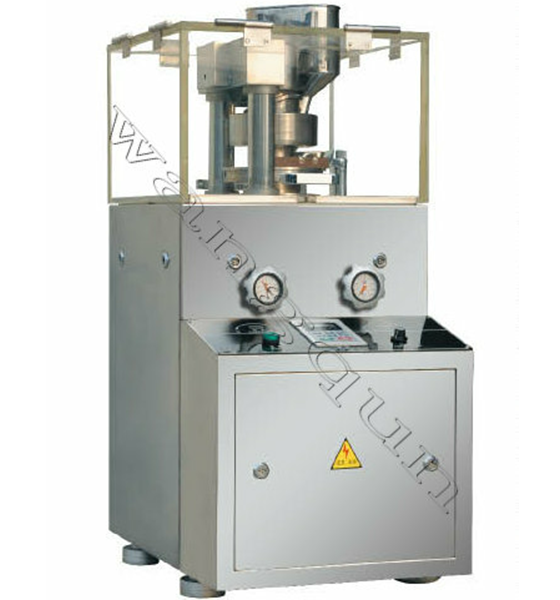How to Troubleshoot a rotary tablet press Effectively
A rotary tablet press is a key machine in pharmaceutical, nutraceutical, and supplement manufacturing, enabling high-volume, consistent tablet production. Despite its efficiency, operational challenges can occur, including uneven tablet weight, sticking, cracking, or mechanical malfunctions. Proper troubleshooting is critical to maintain tablet quality, ensure energy efficiency, and prolong machine lifespan. This guide provides detailed instructions on energy standards, maintenance upgrades, material specifications, and energy-saving performance, helping manufacturers optimize their rotary tablet press operations.
Table of Contents
Introduction to Rotary Tablet Press Troubleshooting
Common Problems and Causes
Troubleshooting Steps
Material Considerations
Energy Efficiency Standards
Upgrade and Maintenance Plans
Energy-Saving Practices and Performance
Case Studies
Conclusion
1. Introduction to Rotary Tablet Press Troubleshooting
Troubleshooting a rotary tablet press effectively requires a systematic approach. Manufacturers must understand the machine’s components, operational parameters, and material behavior to quickly identify and correct issues. Regular troubleshooting ensures:
Consistent tablet weight, size, and hardness
Reduced production downtime and repair costs
Compliance with GMP and industry regulations
Improved energy efficiency and operational safety
Key components involved in troubleshooting include:

2. Common Problems and Causes
| Problem | Possible Cause | Impact on Production |
|---|
| Uneven tablet weight | Powder flow inconsistency, worn punches | Reduced quality, regulatory compliance issues |
| Sticking tablets | High moisture content, insufficient lubrication | Increased waste, machine downtime |
| Cracked or chipped tablets | Excessive compression, misaligned punches | Compromised tablet integrity |
| Machine vibration | Loose components, uneven floor | Operator safety risk, production inefficiency |
| Low output | Blocked feeder, worn dies | Reduced production capacity |
Understanding root causes is essential for effective troubleshooting and preventive maintenance.
3. Troubleshooting Steps
A systematic troubleshooting process includes:
Step 1: Inspect Punches and Dies
Check for wear, cracks, or deformation
Replace damaged components promptly
Step 2: Assess Powder Flow
Step 3: Verify Compression Force
Step 4: Examine Lubrication
Step 5: Check Machine Alignment
Step 6: Test Digital and Electrical Controls
Calibrate sensors and monitoring systems
Ensure proper data feedback for pressure, speed, and fill depth
4. Material Considerations
The choice and quality of raw materials significantly affect tablet press performance:
Powder flowability: Granules must flow consistently through the feeder
Moisture content: Excess moisture causes sticking and capping
Particle size: Uniform particle size ensures consistent compression
Lubrication: Compatible lubricants reduce friction and wear on punches
| Material Property | Optimal Range | Notes |
|---|
| Moisture Content | 2–5% | Adjust drying process as needed |
| Particle Size | 100–500 µm | Ensures uniform fill and compression |
| Lubricant Type | Magnesium stearate or equivalent | Prevent sticking without affecting tablet dissolution |
5. Energy Efficiency Standards
Modern rotary tablet presses are designed to meet energy-saving and environmental standards:
High-efficiency motors reduce electricity consumption
Variable speed drives (VSDs) optimize power use based on production load
Digital monitoring systems track energy consumption in real time
Compliance with ISO 50001 energy management standards
Ensuring adherence to these standards helps reduce operational costs and supports sustainable manufacturing practices.
6. Upgrade and Maintenance Plans
Regular maintenance and upgrades improve both machine reliability and energy efficiency:
Preventive Maintenance Schedule
| Task | Frequency | Notes |
|---|
| Clean turret, hopper, and punches | Daily | Prevent powder residue |
| Inspect punches and dies | Weekly | Replace worn or damaged components |
| Lubricate moving parts | Weekly | Use GMP-compliant lubricants |
| Hydraulic system check | Monthly | Inspect pressure and fluid levels |
| Electrical system inspection | Monthly | Verify connections and sensors |
| Full system alignment | Quarterly | Ensure optimal compression and output |
Upgrade Options
Automatic lubrication systems for consistent maintenance
Digital control panel upgrades for accurate monitoring
Energy-efficient motors and drives
Safety and monitoring sensors for operator protection
7. Energy-Saving Practices and Performance
Implementing energy-saving practices can enhance tablet press efficiency:
Use load-based speed control to match production requirements
Reduce idle running time between batches
Maintain optimal lubrication to decrease friction
Conduct regular alignment checks to reduce mechanical resistance
Energy consumption comparison:
| Feature | Standard Press | Energy-Efficient Press | Savings |
|---|
| Motor Power | 15 kW | 12 kW | 20% |
| Idle Power Loss | 2 kW | 0.5 kW | 75% |
| Output per kWh | 5000 tablets | 6000 tablets | +20% |
These measures help manufacturers reduce costs while maintaining production quality.
8. Case Studies
Case Study 1: Pharmaceutical Tablet Production
A European manufacturer reduced downtime by 30% using systematic troubleshooting procedures. Consistent tablet weight and hardness were achieved by inspecting punch alignment and powder flow.
Case Study 2: Nutraceutical Tablets
An Asian supplement producer implemented energy-efficient motors and digital monitoring, reducing electricity consumption by 18% while maintaining high tablet quality.
Case Study 3: Veterinary Tablets
By adopting preventive maintenance and material quality checks, a manufacturer minimized sticking and chipping issues, improving overall production yield.
9. Conclusion
Effective troubleshooting of a rotary tablet press is essential for consistent tablet quality, operational efficiency, and energy savings. Manufacturers should:
Regularly inspect punches, dies, and feeder systems
Monitor powder flow, compression force, and lubrication
Follow energy efficiency standards
Implement upgrades and preventive maintenance plans
Maintain detailed logs and QC reports for regulatory compliance
With proper troubleshooting, maintenance, and energy-saving practices, rotary tablet presses can deliver reliable, high-quality production while reducing downtime and operational costs.











 Phone
Phone
Comment
(0)